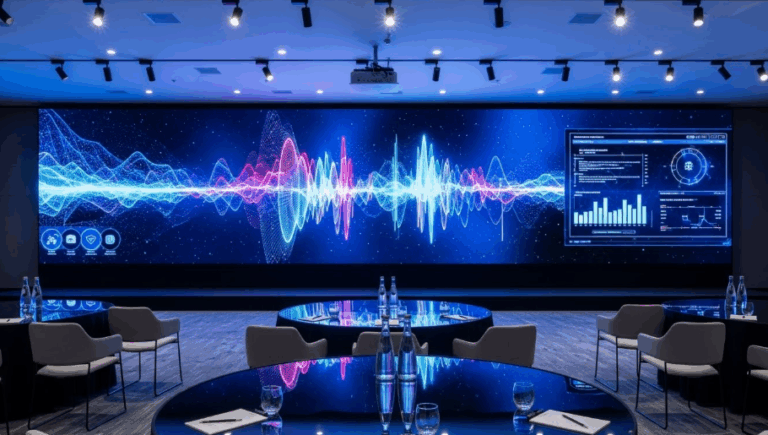LED displays are highly customizable display devices whose flexibility and versatility make them an important component in a variety of application scenarios. Synchronous control and asynchronous control are usually used to control the LED display.

Synchronous control
Synchronous control is a kind of traditional display control technology, through the computer and other equipment to control the LED display content and effect. This method usually requires professional control software and hardware to achieve, the control system needs to have high performance and high stability.
The main feature of synchronous control is good real-time performance. It can control the content and effect of the display screen in real time through computers and other devices to achieve a high degree of customization and flexibility. In addition, synchronization control can also realize multi-screen linkage through network connection, so as to achieve large-scale and complex display effect.
Asynchronous control
Asynchronous control is a display control technology based on the control card, through the control card memory data to achieve the LED display content and effect. Control cards often have high storage capacity and processing capacity, can store a large number of display content and effects, and through the call of different control templates to achieve a variety of different display effects.
The main feature of asynchronous control is simple and easy to use, do not need professional control software and hardware, just through the control card memory data to achieve the display effect. In addition, asynchronous control allows for more flexibility and versatility through wireless communication and other means to enable real-time updates of the displayed content.

The choice between synchronous and asynchronous control
When selecting synchronous control and asynchronous control, you need to consider multiple factors, including application scenarios, display effects, control requirements, and control costs. Here are some common choices:
Application scenario
Synchronous control is usually used in scenarios that require real-time control and linkage. For application scenarios that require large amounts of storage and versatility, asynchronous control is often used.
Display effect
For complex and changeable display effects, synchronous control is usually used; For simple, stable displays, asynchronous controls are often used.
Control requirement
For the control requirements requiring high precision and high stability, synchronous control is usually used. Asynchronous control is usually used for control requirements that do not require high precision and high stability.
Control cost
Asynchronous control is usually used in scenarios where control costs are high. For application scenarios where cost control is not the primary concern, synchronous control is often considered.
It is important to note that the parameters and characteristics of the display need to be taken into account when choosing between synchronous and asynchronous controls. For example, if the pixel density of the display is very high, precise control is needed to ensure the display effect; If the brightness and color saturation of the display are high, high bandwidth and processing power are required to achieve real-time control.
Whether synchronous control or asynchronous control is selected, the compatibility, expansibility and reliability of the control software and hardware should be taken into account in the design and implementation of the control system. At the same time, it is also necessary to note that different control methods may affect the service life and stability of the LED display screen, which requires proper maintenance and maintenance.
In a word, choosing the appropriate LED display control mode not only meets the requirements of application scenarios, but also takes into account the reliability and cost-effectiveness of the control system. Efficient, stable and reliable LED display control can be achieved by considering multiple factors and carrying out appropriate system design and implementation.





